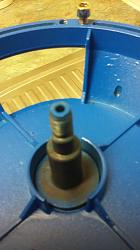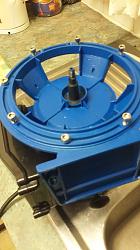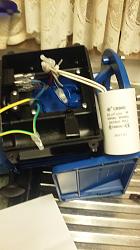One big limiting factor in your design is not going to be the belt versus the capacity of the motor but the diameter of your shaft.
@ 20mm shaft diameter with a 40 mm vertical travel your sanding drum diameters are going to be limited. which will mean you will not be able to take full advantage of the available power you will have.
You would probably need a shaft more like 30 mm in diameter to take full advantage of your 2300 watt motor then you could use a 100 mm drum or possibly larger.
But you wold need either 2 10mm belts or a single 15 mm belt with a small pulley diameter of 90 mm or larger.


 LinkBack URL
LinkBack URL About LinkBacks
About LinkBacks



 Reply With Quote
Reply With Quote




 PJ
PJ


Bookmarks